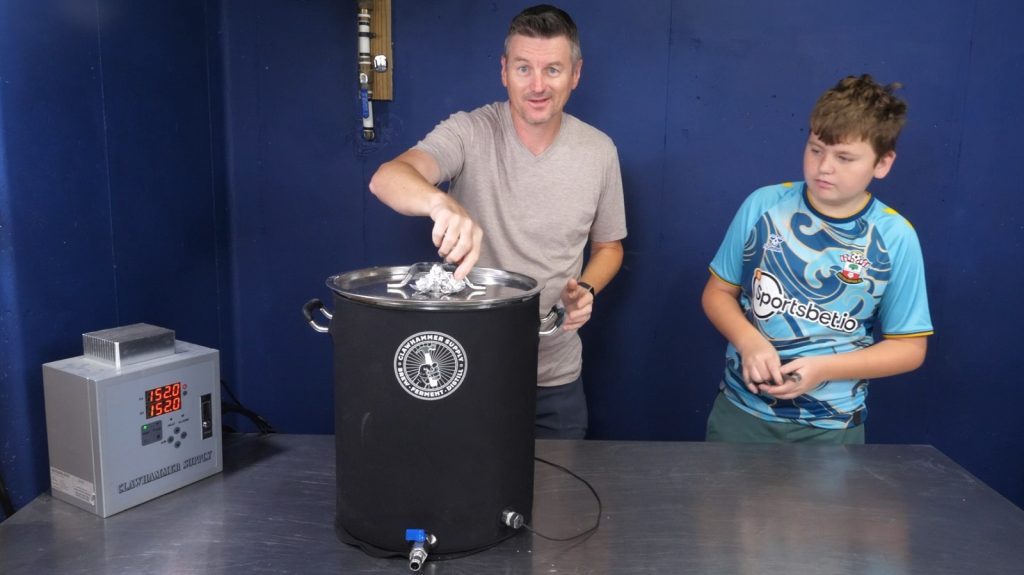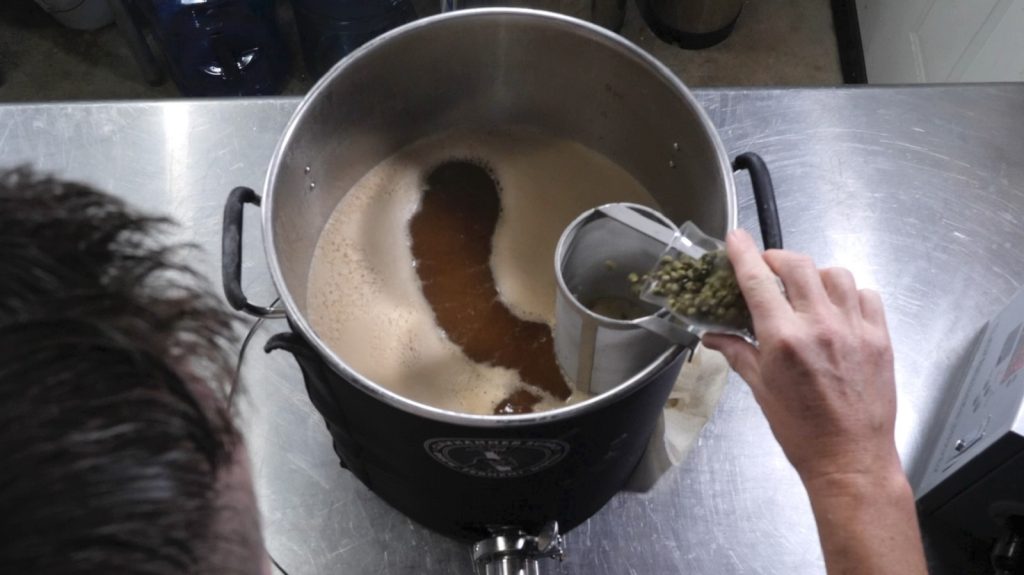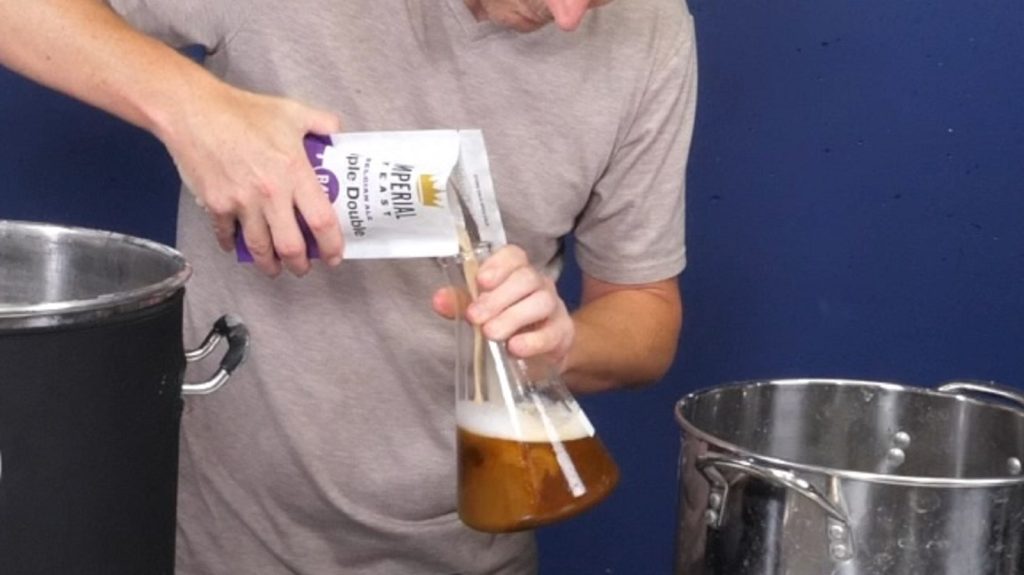Author: Martin Keen
I’m honestly not sure when the first time I tried a Belgian Dark Strong Ale was, but it certainly wasn’t my first Belgian-style ale, meaning I had some idea what to expect in terms of the unique fermentation character associated with this regional family of beer styles. What I am confident about is my perspective of this style, which also commonly goes by the monikers of Trappist Quadrupel or more simply Quad – a combination of delectable dark fruit, toasty malt, and spice buttressed by a balanced bitterness and high strength.
Historically, Belgian monks began brewing beers, often of moderate to high strength, to serve to local communities for the purposes of sustenance. While it’s likely this included batches that were characteristically similar to what we now call Belgian Dark Strong Ale, it wasn’t until the early 20th century that monks from the Westvleteren monastery began producing this richly flavored and strong style, which the BJCP describes as:
A dark, complex, very strong Belgian ale with a delicious blend of malt richness, dark fruit flavors, and spicy notes. Complex, rich, smooth, and dangerous.
Belgian Dark Strong Ale isn’t a beer I drink on the regular due largely to is high alcohol level and my general preference for staying upright. That said, if one is available wherever I happen to be drinking, I’m wont to order at least a sample. Having brewed a couple batches using more or less standard methods, I was curious how a batch would turn out if a bunch of corners were cut and designed a Short & Shoddy version to see for myself!
| BREWING THE BEER |
This recipe was inspired largely by past successful batches and others I reviewed online, though given the expected efficiency hit when using an abbreviated mash and boil, I relied on two sources of simple sugar.
Short & Shoddy Belgian Dark Strong Ale
Recipe Details
| Batch Size | Boil Time | IBU | SRM | Est. OG | Est. FG | ABV |
|---|---|---|---|---|---|---|
| 5.5 gal | 60 min | 20 | 18 SRM | 1.087 | 1.012 | 9.84 % |
| Actuals | 1.087 | 1.012 | 9.84 % | |||
Fermentables
| Name | Amount | % |
|---|---|---|
| Modern Pilsner | 11 lbs | 64.71 |
| Munich Malt | 3 lbs | 17.65 |
| Brown Sugar (Light) | 1 lbs | 5.88 |
| Candi Syrup D-90 | 1 lbs | 5.88 |
| Aromatic Malt | 8 oz | 2.94 |
| Special B | 8 oz | 2.94 |
Hops
| Name | Amount | Time | Use | Form | Alpha % |
|---|---|---|---|---|---|
| Hallertauer Mittelfrueh | 60 g | 30 min | Boil | Pellet | 4.5 |
| Hallertauer Mittelfrueh | 20 g | 5 min | Boil | Pellet | 4.5 |
Yeast
| Name | Lab | Attenuation | Temperature |
|---|---|---|---|
| Triple Double (B48) | Imperial Yeast | 78% | 64.9°F - 77°F |
Notes
| Water Profile: Ca 74 | Mg 7 | Na 8 | SO4 75 | Cl 100 |
Download
| Download this recipe's BeerXML file |
At 8:11pm one evening, I collected the full volume of water, adjusted it to my desired profile, heated it to the predicted strike temperature, then incorporated the grist.
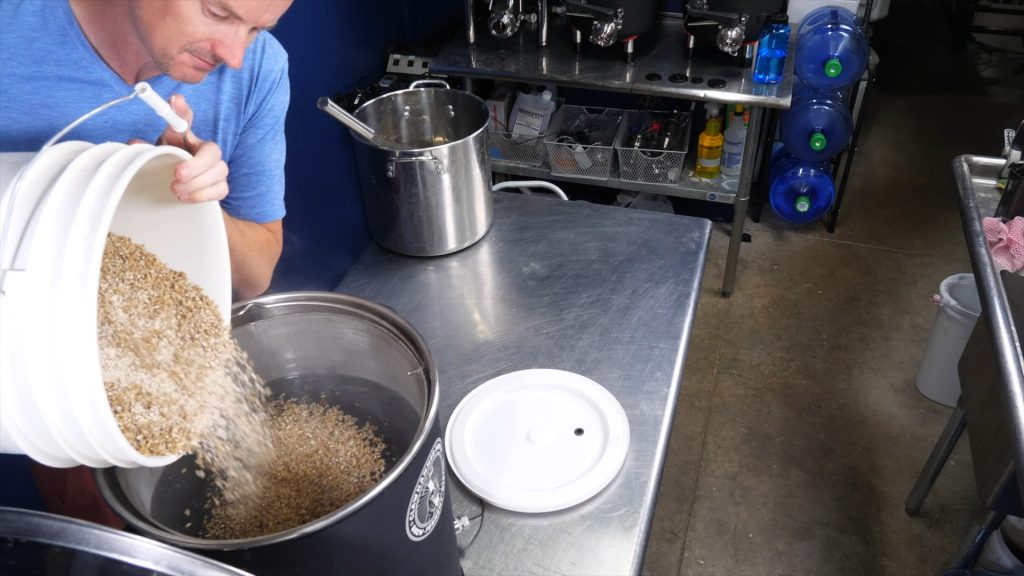
With the mash well combined by 8:57pm, I covered the kettle and set my Clawhammer Supply 240v controller to maintain the desired mash temperature of 152°F/67°C before heading inside to prepare for bed.

The following morning, about 11 hours later, I checked on the mash to find it was right at my set temperature.
At this point, I hoisted the grain basket out of the sweet wort and allowed it to drip into the kettle while I dropped my son off at school. Immediately upon my return, and with about 45 minutes until a scheduled work conference call, I boiled the wort for a brief 30 minutes, adding hops at the times listed in the recipe.
With 10 minutes left in the boil, I added the D-90 candi syrup and brown sugar to the wort.
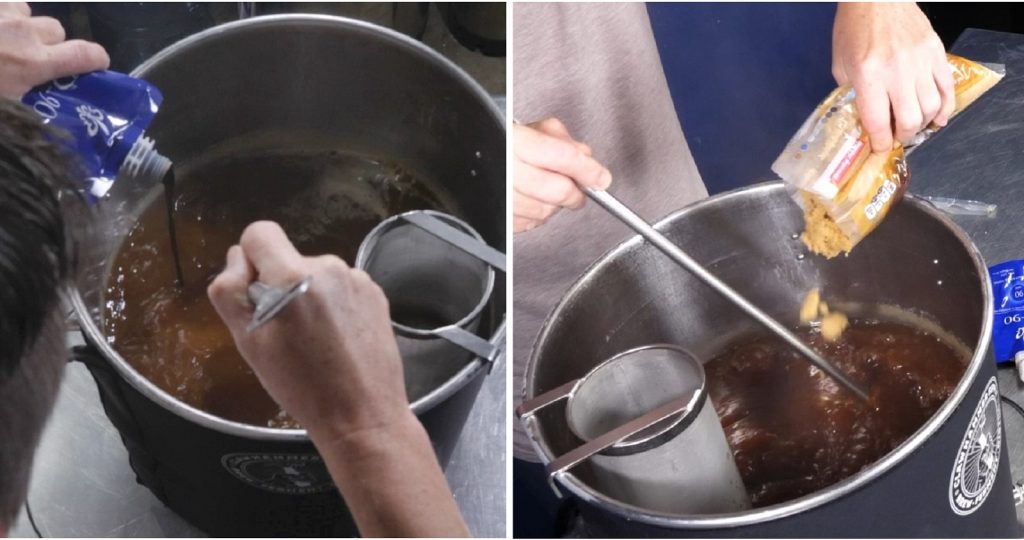
When the boil was completed, I quickly chilled the wort before taking some leftovers to make a vitality starter with Imperial Yeast B48 Triple Double.
After transferring the wort to a fermented, I took a refractometer reading showing it was at 1.087 OG for a respectable brewhouse efficiency of 74%. The total time I spent brewing on this day was right around 1 hour and 15 minutes.

I allowed the wort to chill to 68˚F/20˚C over a few hours before dosing it with pure oxygen and pitching the vitality starter.

By the following morning, fermentation was very active, and with activity absent 10 days later, I took a hydrometer measurement showing the beer was at the expected 1.012 FG. At this point, I pressure-transferred the beer to a CO2 purged keg and placed in on gas in my keezer where I let it sit for around 3 months before it was ready to serve to tasters.

| RESULTS |
A total of 24 people of various levels of experience participated in this Short & Shoddy evaluation. Participants were informed of the specific beer style and provided the BJCP description prior to completing the survey. Tasters were then instructed to rate how hoppy, malty, and dry they perceived the beer to be on a 0-5 scale where a rating of 0 indicated “not at all” and 5 indicated “extremely.”

Tasters were provided a list of common hop, malt, and yeast characteristics then instructed to select from each the one they perceived as being most prominent in the beer.
Hop Characteristics
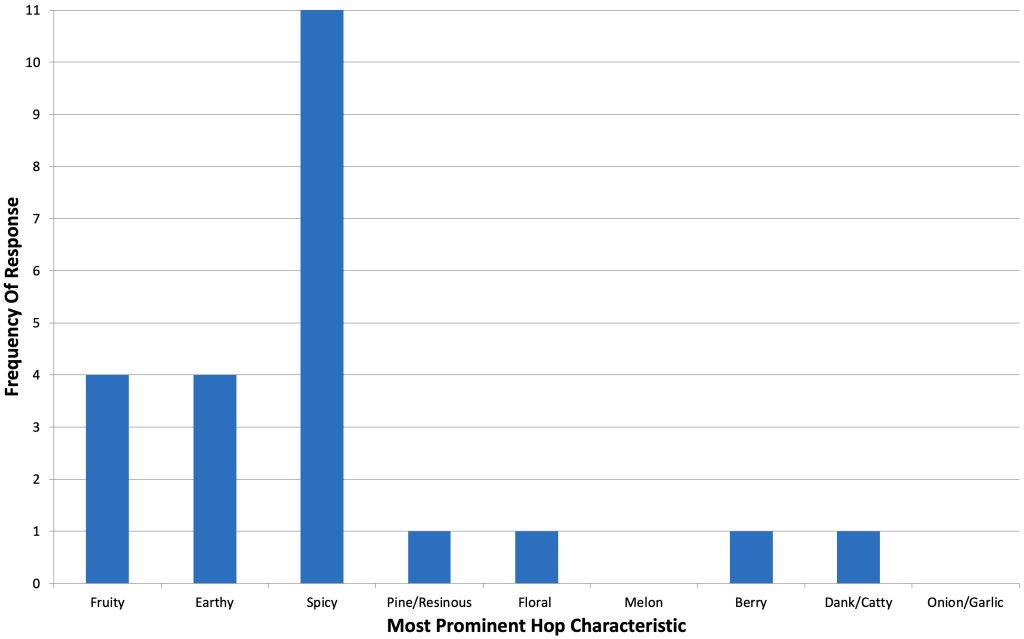
Malt Characteristics
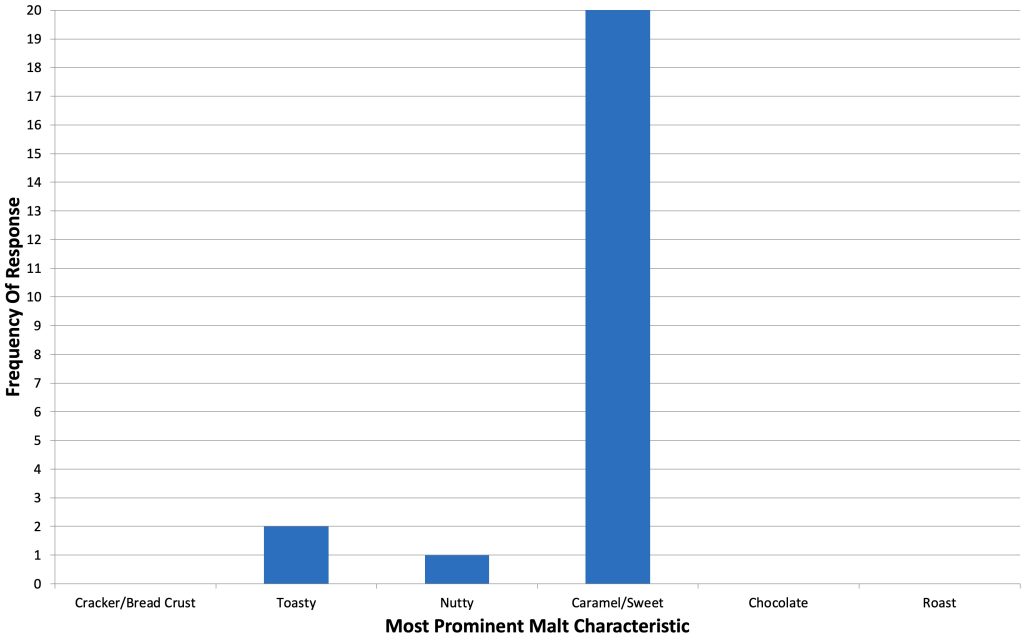
Yeast Characteristics

Next, participants were asked to indicate whether or not they detected any off-flavors in the beer; those who did were provided a list of common off-flavors and instructed to select the one they perceived as being strongest. In total, 3 tasters felt the beer was astringent, 1 detected acetaldehyde, 1 perceived diacetyl, 2 thought it was estery, 2 felt it was oxidized, 2 perceived a phenolic note, and 2 detected a solvent characteristic.
Tasters were then asked to rate how well the beer represented the intended style, based on the provided BJCP description, on a 0-5 scale where 0 meant “not at all” and 5 meant “exactly.”

Finally, tasters were asked to rate how much they enjoyed the beer on a 0-5 scale where 0 indicated not at all and 5 indicated extremely.
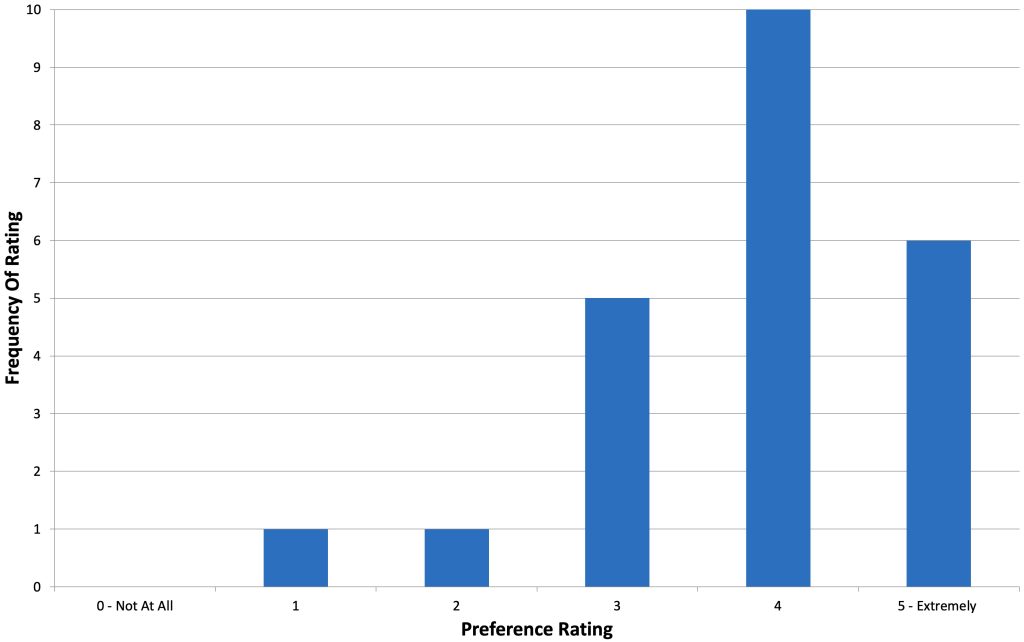
My Impressions: I perceived this beer as having the expected Belgian fermentation aroma marked by a pleasant blend of dark fruit and baking spice, as well as a unique candy-like flavor that I found rather enjoyable. Despite its strength, I felt this beer was very smooth with no notable heat from the alcohol.
| CONCLUSION |
Regardless of the specific style, Belgian ales are widely known for their unique fermentation character, which is a function of the esters and phenols produced by the specific yeasts used in this region. Given it’s the strongest of the Trappist beer styles, brewing a balanced and smooth Belgian Dark Strong Ale can be a bit tricky, hence my interest in seeing what I could get away with my making a version using Short & Shoddy methods.
As might be expected for the style, tasters rated the most prominent overall characteristics in this Short & Shoddy Belgian Dark Strong Ale as being the malt, which a vast majority described as being caramel/sweet. Whereas 19 tasters felt the fermentation was marked mostly by spicy phenolics, only 2 felt esters were more dominant. Moreover, and overwhelming number of tasters not only felt this beers was a solid representation of the style, but enjoyed drinking it as well.
Personally, I was very pleased with how this Belgian Dark Strong Ale turned out and impressed with the fact it was brewed in such a shoddy way. I’d often wondered how something as simple as an overnight mash would affect beer quality, and in this case, it didn’t seem to have any negative impact at all, in fact it’s possible the extended saccharification time contributed to good attenuation. It’s hard to say whether I’d use this exact approach again in the future, as it was tailored to fit my busy schedule, but I’m now confident cutting certain corners when making this style isn’t a guarantee of a bad outcome.
Watch this on The Brülosophy Show!
If you have thoughts about this Short & Shoddy brew, please feel free to share it in the comments section below!
Support Brülosophy In Style!
All designs are available in various colors and sizes on Amazon!
Follow Brülosophy on:
FACEBOOK | TWITTER | INSTAGRAM
If you enjoy this stuff and feel compelled to support Brulosophy.com, please check out the Support page for details on how you can very easily do so. Thanks!


